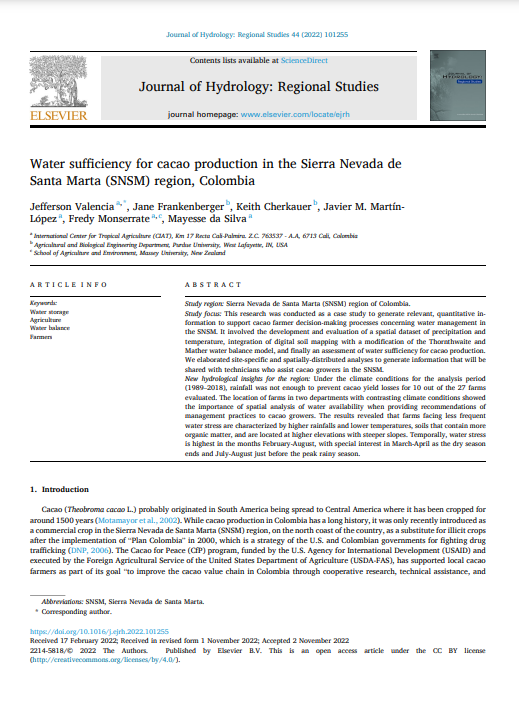Study region: Sierra Nevada de Santa Marta (SNSM) region of Colombia.
Study focus: This research was conducted as a case study to generate relevant, quantitative information to support cacao farmer decision-making processes concerning water management in the SNSM. It involved the development and evaluation of a spatial dataset of precipitation and temperature, integration of digital soil mapping with a modification of the Thornthwaite and Mather water balance model, and finally an assessment of water sufficiency for cacao production. We elaborated site-specific and spatially-distributed analyses to generate information that will be shared with technicians who assist cacao growers in the SNSM.
New hydrological insights for the region: Under the climate conditions for the analysis period (1989–2018), rainfall was not enough to prevent cacao yield losses for 10 out of the 27 farms evaluated. The location of farms in two departments with contrasting climate conditions showed the importance of spatial analysis of water availability when providing recommendations of management practices to cacao growers. The results revealed that farms facing less frequent water stress are characterized by higher rainfalls and lower temperatures, soils that contain more organic matter, and are located at higher elevations with steeper slopes. Temporally, water stress is highest in the months February-August, with special interest in March-April as the dry season ends and July-August just before the peak rainy season.
Valencia, J.; Frankenberger, J.; Cherkauer, K.; Martín Lopez, J.M.; Monserrate, F.; da Silva, M.

